Washington Department of Labor: Referral Tracking
We were retained by the Washington Department of Labor & Industries to determine if it was feasible to design and build an “Enterprise Referral Tracking System.” One of the first challenges was to figure out what constituted a referral. After a few straw man definitions and a lot of polling, we came up with a short list of about 60 different types of referrals, which were being independently managed in over a dozen major, and about as many minor, systems throughout the agency.
The agency already has a great deal of expertise in this particular functionality. Of the dozen or so systems described above with referral tracking functionality built in, three (RTS1, RST2 and RTS3) were explicitly aimed at potentially broad-based referral functionality. It had proved harder than it would sound to grow any of these good starting points into an enterprise-wide system, partly because of best practices and partly because of agile development.
The best practices angle was that they had a great deal of experience with traditional application development, where it is far easier to build functionality around local database instances. This has the side effect of causing the system to have an increasingly larger footprint of shared concepts with the rest of the agency to support what was essentially MDM functionality. The agile problem emerged because inevitably one program had been funded to create the RTS system and their needs were driving other projects throughout the agency. Because there was no guard, any additional functionality that the program needed, if it were at all related to referrals, was added to the scope. Often these additions were an impediment rather than an aid in getting other programs to adopt the system.
We designed a truly elegant system. The cost of building it was estimated at about 10% of the initially expected cost. As it turns out, the entire project will cost more than that, but still less than half what they had originally thought because most of the effort is in integrating legacy systems through SOA messaging. Since they have the necessary resources in-house, the incremental costs are far less.
This was another on-time, on-budget project with a much better outcome than had been anticipated at the outset.
Contact Us:
Overcome integration debt with proven semantic solutions.
Contact Semantic Arts, the experts in data-centric transformation, today!
Address: Semantic Arts, Inc.
123 N College Avenue Suite 218
Fort Collins, CO 80524
Email: [email protected]
Phone: (970) 490-2224

